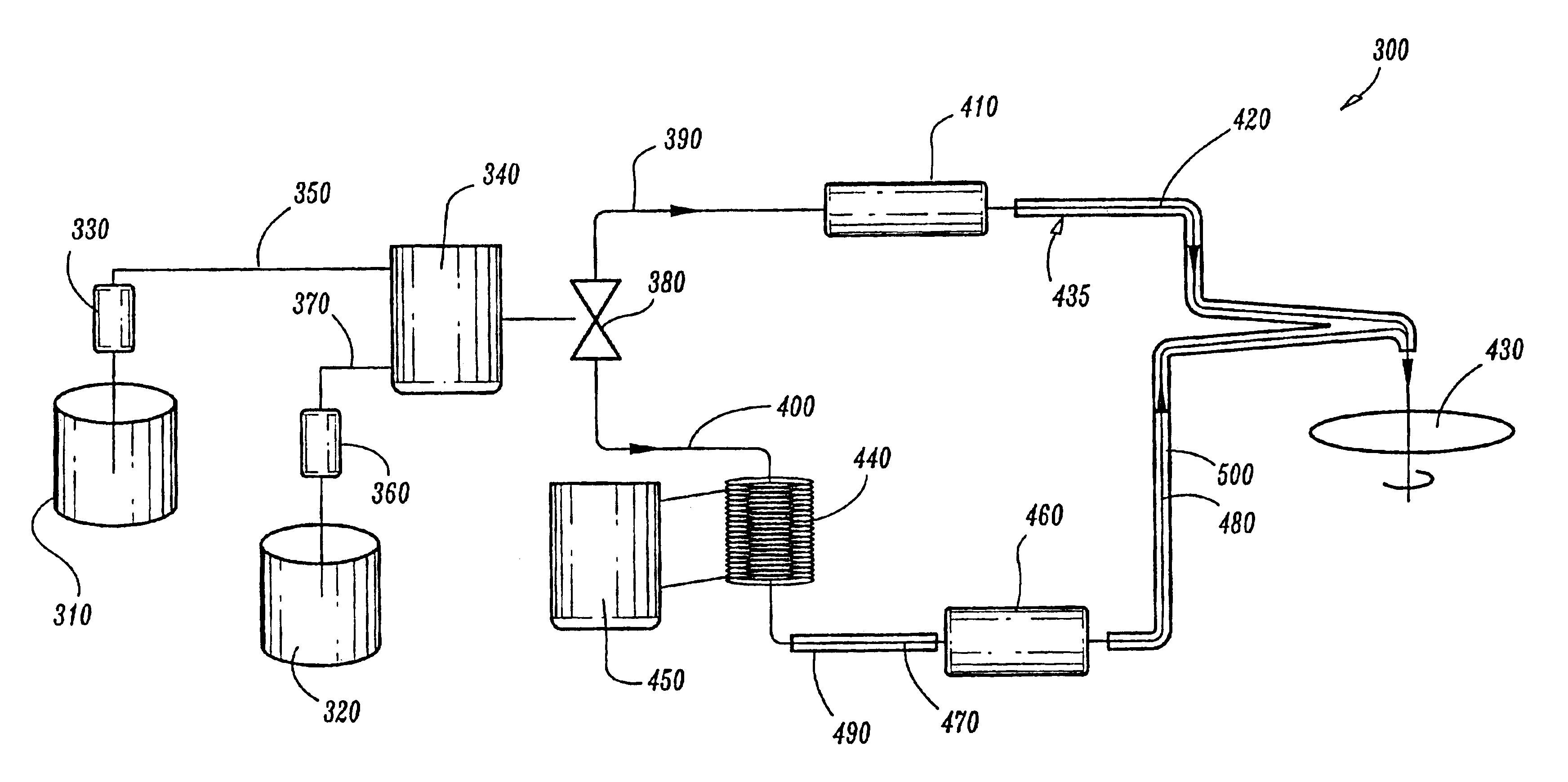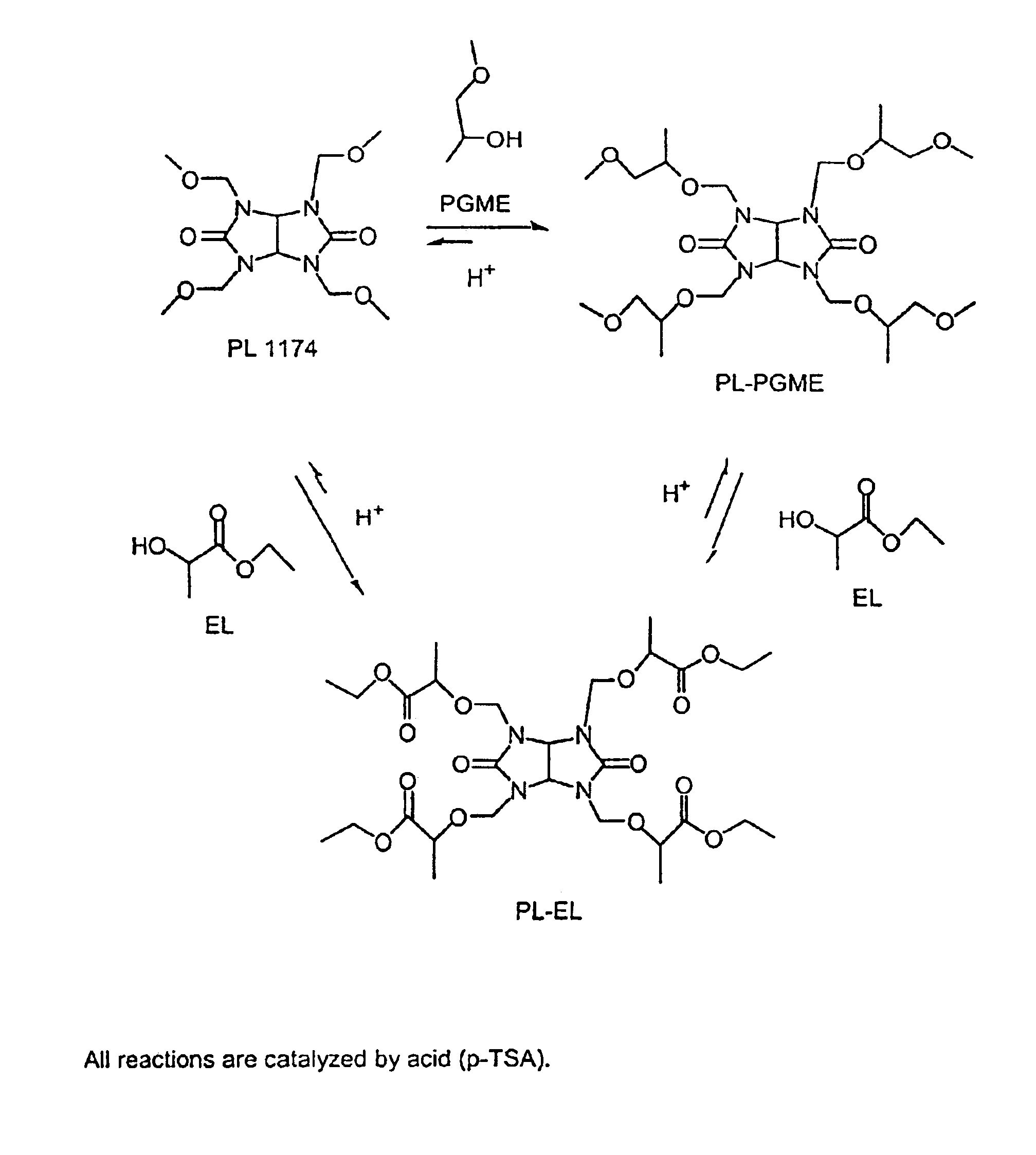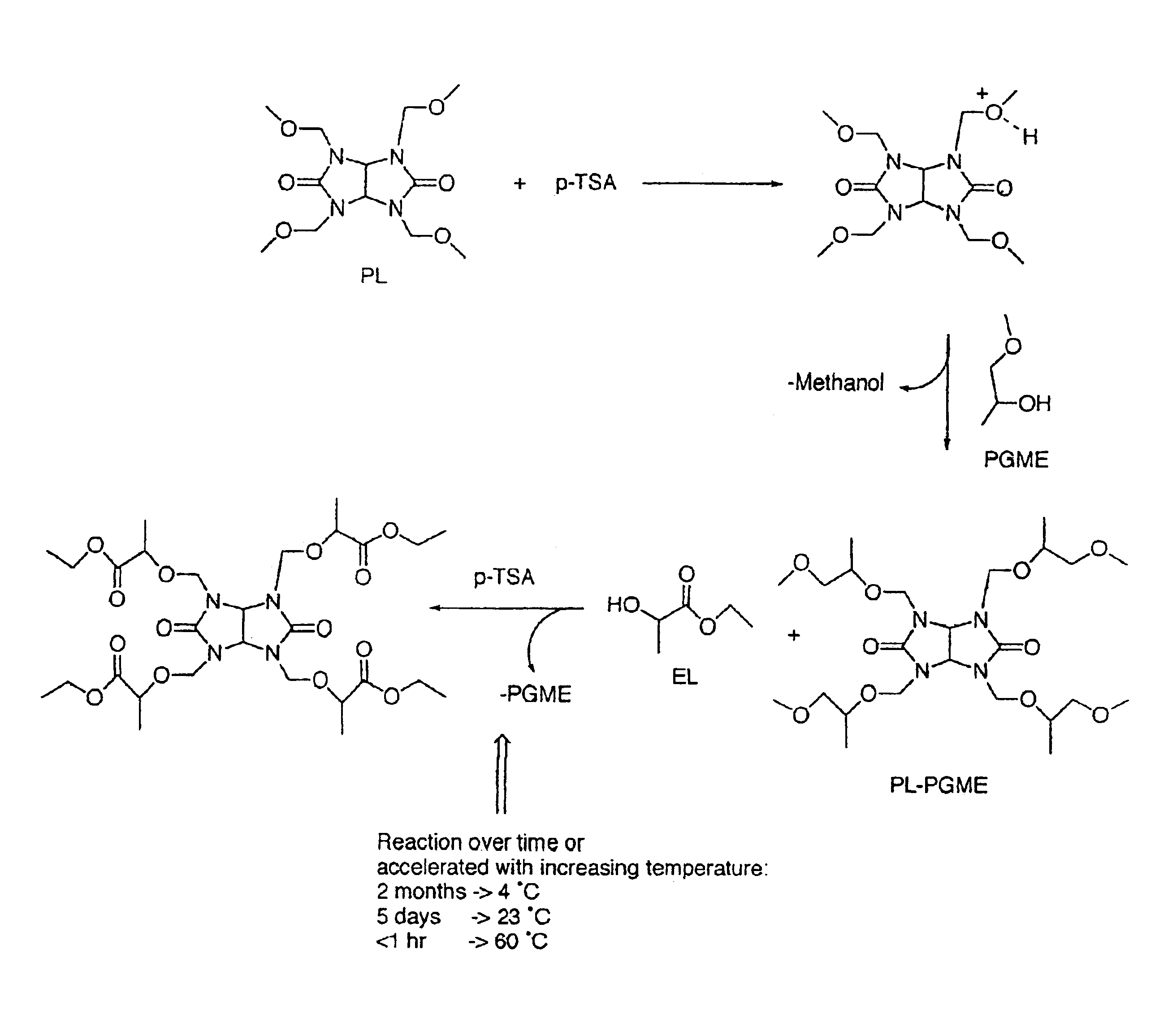Anti-reflective coating conformality control
a conformality control and anti-reflective film technology, applied in the direction of photosensitive materials, instruments, photomechanical equipment, etc., can solve the problem of conformal anti-reflective film coating which fills vias very poorly, and achieves the effect of reducing set-up and conversion tim
- Summary
- Abstract
- Description
- Claims
- Application Information
AI Technical Summary
Benefits of technology
Problems solved by technology
Method used
Image
Examples
Embodiment Construction
Systems and methods will be described in which the chemical manufacturer is not required to mix diluting solvents with BARC components in solution before the BARC material is shipped to the end-user. Instead, the end-user mixes the diluting solvents and BARC components himself in order to obtain desired material properties. For example, a BARC required by an end-user may include the product of a cross-linker component mixed with a polymer component and diluted in a solvent. The BARC cross-linker component is PL 1174 and p-TSA.H2O in a solution of PGME. Alternatively, the BARC cross-linker component is PL-EL, the ultimate reaction product of PL 1174 and p-TSA.H2O in a solution of PGME, in the presence of EL. The diluting solvents are kept separate from the BARC components in solution until the user introduces the diluting solvents and BARC components at the point of use. Alternatively, the user mixes the diluting solvents and BARC components in a bottle or reservoir at the point of u...
PUM
 Login to View More
Login to View More Abstract
Description
Claims
Application Information
 Login to View More
Login to View More - R&D
- Intellectual Property
- Life Sciences
- Materials
- Tech Scout
- Unparalleled Data Quality
- Higher Quality Content
- 60% Fewer Hallucinations
Browse by: Latest US Patents, China's latest patents, Technical Efficacy Thesaurus, Application Domain, Technology Topic, Popular Technical Reports.
© 2025 PatSnap. All rights reserved.Legal|Privacy policy|Modern Slavery Act Transparency Statement|Sitemap|About US| Contact US: help@patsnap.com



